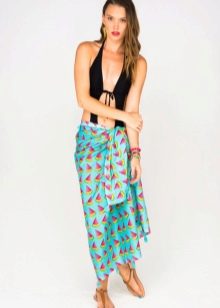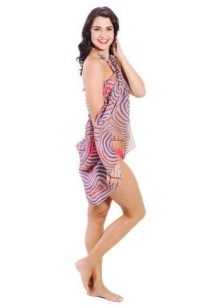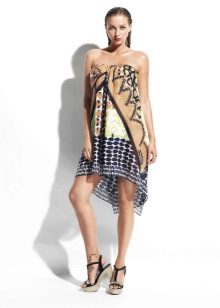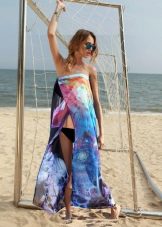Sarong - an eye-catching piece of beachwear

Beachwear has a myriad of clothing options from all over the world. If the pareo has already become a familiar part of the summer wardrobe, then the sarong is still being looked at.
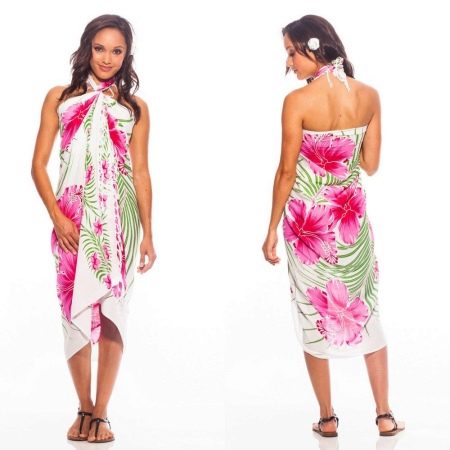
At home it can be called in different ways, including "mundu".
Sarong is a square or rectangular shawl with a rather long side - about 2 m.
It is precisely in its length that the sarong differs from the pareo, which has already firmly entered our life. The longest side of the pareo is usually 1.4 m.
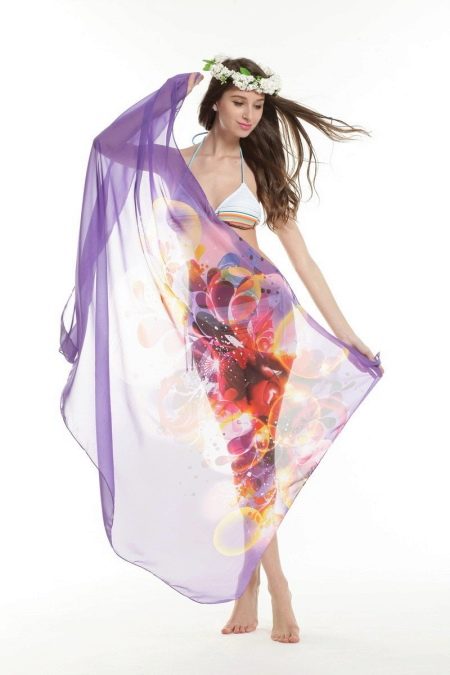
There are many ways to tie a sarong, so one such scarf can replace several items. Multifunctionality is very important for tourists, so we advise you to pay attention to it!



Peculiarities
For the indigenous population, the sarong is a full-length garment, a cross between a skirt and a dress. For different peoples, this is only a female or only a male part of the wardrobe, for others, it is worn by everyone. Depending on the sustainability of national traditions, the sarong has turned into a festive and religious costume, which is usually worn for exceptional occasions, or has become a distinctive element of the Aboriginal people, being an integral part of everyday clothing.
The indigenous people use scarves made of practical natural fabrics of traditional colors, and tourists choose light, obedient and flying sarongs made of cotton, silk, chiffon, and satin. Special rings and buckles fix the sarong, which is very comfortable to wear. Thais often fix the cloth on the body, imitating wide trousers.


The special grace that clothing gives to women, the fluidity of movement and the ability to easily change its shape made the sarong an object of interest for designers.So, the summer wardrobe was replenished with a universal and beautiful detail that makes the image mysterious. Unusual colors, their combinations and quirky patterns were also invented for the sake of fashion for scarves.
In addition to traditional methods of dyeing and weaving threads, they began to use painting on fabric (for example, batik or ikat).

Bringing a sarong home, you can make it an art object (bag, headscarf or neckerchief) or even an interior item (in the form of curtains, bedspreads, panels, tablecloths). Or you can put it in a suitcase, waiting for new travels.
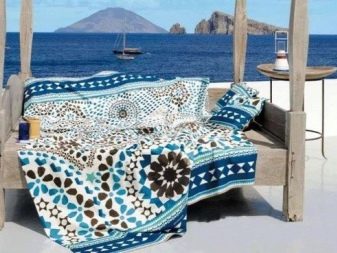
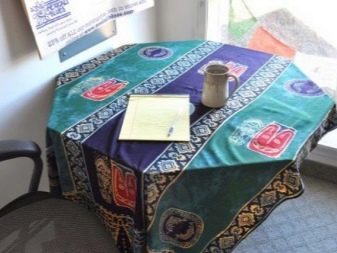
How to tie?
Sarong has a large size, so if you have imagination, you can create romantic or ethnic images. Most often, the sarong is tied around the hips or waist like a skirt.
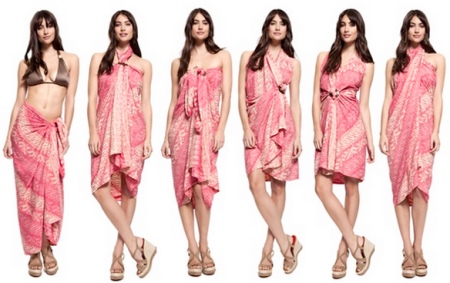
Let's take a look at the common ways to tie a sarong. Many of them are simple and will not take long.
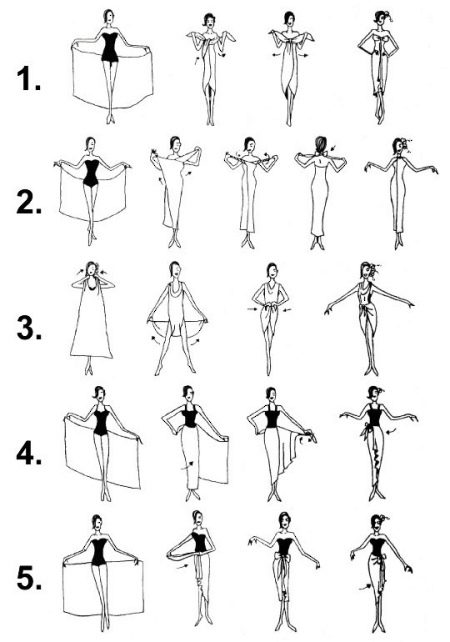
Caribbean option
Allows you to choose the height of the scarf on the body: on the hips or high under the bust. Wrapping yourself in a scarf, you need to tie the tails in front in a knot (they can be left either free or hidden). A more elegant method differs in that the knot is made offset: they take one end, and as a second tail for the knot, they simply intercept a piece of fabric along the top. The rest of the fabric is made out as a scent, gently tucking it inward at the waist and thus masking the knot.
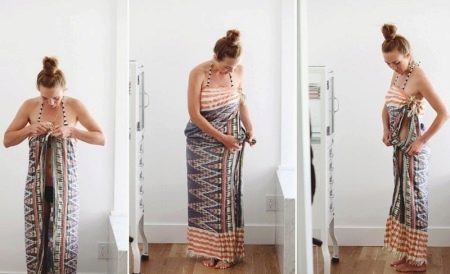
Thai version
They position the fabric vertically, wrap the short edge around the body and tie it in front. The bottom of the scarf is twisted from one or both sides, the ends are raised to the waist and the first knot is hidden with this drapery. You can run the fabric from the bottom between the legs, this is how harem pants are obtained. This option is reliable and easy to use.
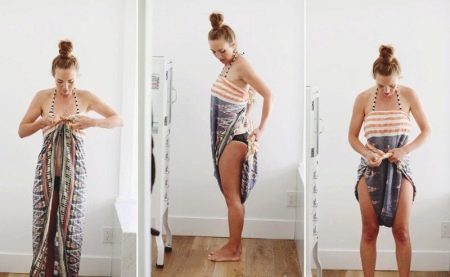
In Burma
Sew the sarong along the short edge, leaving through holes. Putting on the “pipe”, they intercept the “ponytails” along the upper edge, tying them in front, making folds looking inward. Ponytail knots are wrapped inward. This method will help turn the scarf into a skirt or dress.
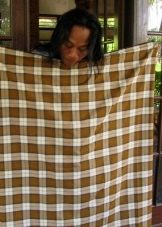
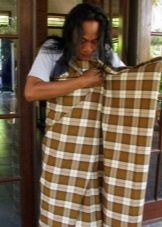
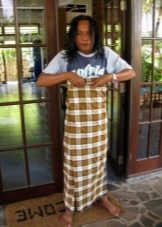
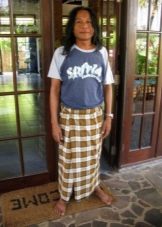
The simplest options are to fold the fabric lengthwise, wrap the fabric around the hips, and tie the top edges. This will complete the miniskirt. Beautiful asymmetrical skirts are obtained by folding a square sarong.

Master classes will help you make a dress in a matter of seconds:
- Passing the fabric behind your back, cross the upper ends on your chest, roll them into bundles and tie them at the back of your neck.
- Leave one edge on the side, lifting the sarong over the chest, slide the scarf behind the back and wrap it around the body, there will be an overlap of fabric on the back. Try to leave the bottom corner of the shawl free above the fabric. The second top corner may also be on the side. These ends will serve as straps: we lift them forward upward from under the armpits, we tie them at the back of the neck.
- In a similar way, a shorter scarf can be tied on one shoulder: the middle of the sarong is oriented to one side, on the other hand, the fabric is overlapped with the armpits, the corners of the scarf after this cross are folded into bundles, lifted onto the shoulder and tied from above. The result is an asymmetrical dress in antique style.
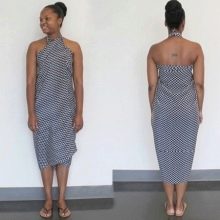


These are the most popular ways. It is worth experimenting to find your own version, because a well-chosen pattern and a correctly tied sarong will add elegance to the figure.
For example, for ladies with a lush bust, it is better to tie a sarong like a skirt, and with a petite one, make knots on the chest. Correct vertical or diagonal drawing will help to correct completeness. A scarf tied above the waist will add height. The narrower the shoulders, the higher the sarong should be.
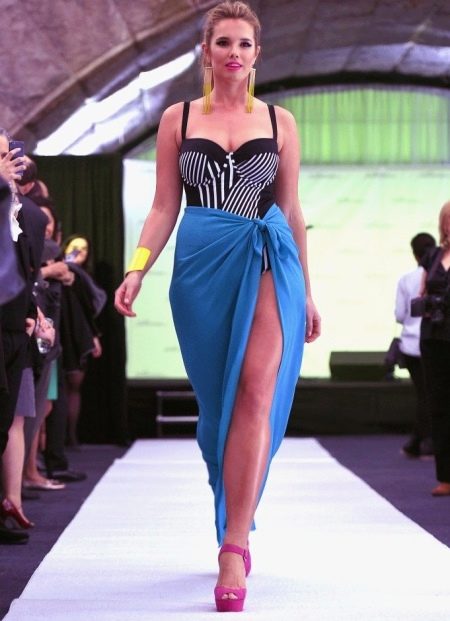
What to wear with?
Indigenous peoples wear these skirts with special blouses. But the rest of the world prefers to use the sarong as part of a beach outfit, combining with separate and one-piece swimsuits, tops and light open shoes.
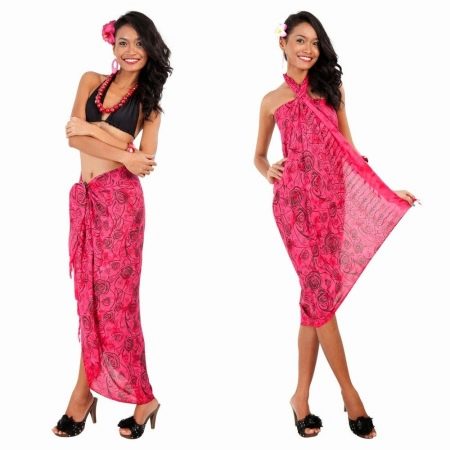
Elegant and exclusive scarves can be worn for summer parties as a dress, complementing the outfit with heeled or platform sandals. Basic flip flops and beach flip flops will complete any sarong look.Variations with shoes with ties will be interesting, when ribbons, straps "hug" the legs.

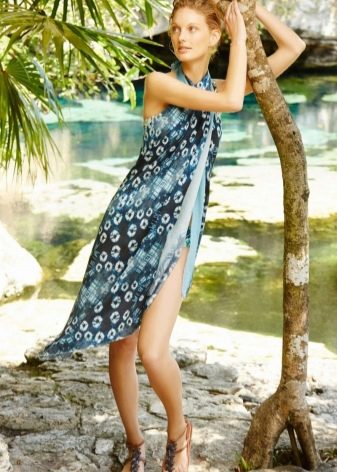
Accessories
Considering the specifics of such summer clothes, from the accessories you can stop at hats, headbands and scarves. Bright decorations will also find their place. It can be inexpensive jewelry, colorful earrings, bracelets, massive necklaces made of stones or glass. Interesting sets of seashells, corals, feathers.
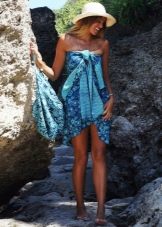
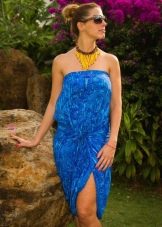


Beach looks love bags made from natural materials: cotton, straw, etc. Big or small, hard or soft like knapsacks, of the most diverse shape - it depends on your preferences and needs.


Special buckles-buttons, as for neckerchiefs, help to securely fasten the outfit. They come in different shapes to make your look even more sophisticated and elegant. Wearing a sarong as a dress, you can gird it. The modern interpretation allows it.

A summer look is not complete without large sunglasses, because it is these glasses that will help protect your eyes from the scorching rays. Sarong, as an outfit, is not only a tribute to fashion and beauty, but also a very functional and comfortable thing that can become the main element of the image. It's worth getting a pair of sarongs to make it easy to change your look every day!
